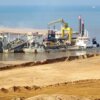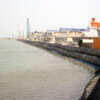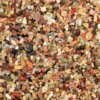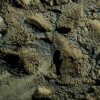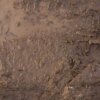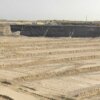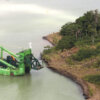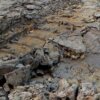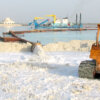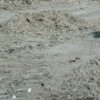Shear strength is the strength of a material to withstand the type of yield or structural failure where the material or component fails in shear.
Shear strength
A shear load is a force that may produce a sliding failure on material along a plane that is parallel to the direction of the force. Shear strength is related to the type of fill material, whether it is high quality or poor quality, reflected in its stress and porosity.
High quality fill
High quality “suitable” fill is usually a granular material with a limited percentage of fines and stone-sized fragments.
Factors affecting the shear strength of granular material are particle size distribution, particle shape, mineralogy, angularity, degree of compaction and stress level.
Other factors such as the amount of organic content and sulphates can also be considered.
When shear stress is applied to a sand mass, the material will change in volume. Dense sand will dilate and loose sand will contract. This is an important characteristic of granular sands and influences the dredging process as well as the final use.
Poor quality fill
Sometimes poor quality fill is the only fill available and must be used. In these cases, the shear strength of poor quality fill material can be improved and increased in several ways to make it suitable for use in a reclamation project, for instance:
- by a spraying and spreading pontoon;
- by a surcharge in combination with prefabricated vertical drains;
- by a sandwich construction with alternating clay and sand layers;
- by the use of binding materials like cement.
The use of poor quality fill can have serious consequences including:
- very slow dewatering which makes it impossible to drive vehicles over the area during construction;
- the material is sensitive to vibrations and may liquefy when heavy equipment is being used;
- the development of strength, while it can be done by various methods mentioned above, is difficult to predict and must be tested.
The shear strength of cohesive material can be tested directly with a field vane test in a borehole. It can also be correlated to cone penetration tests or standard penetration tests.



